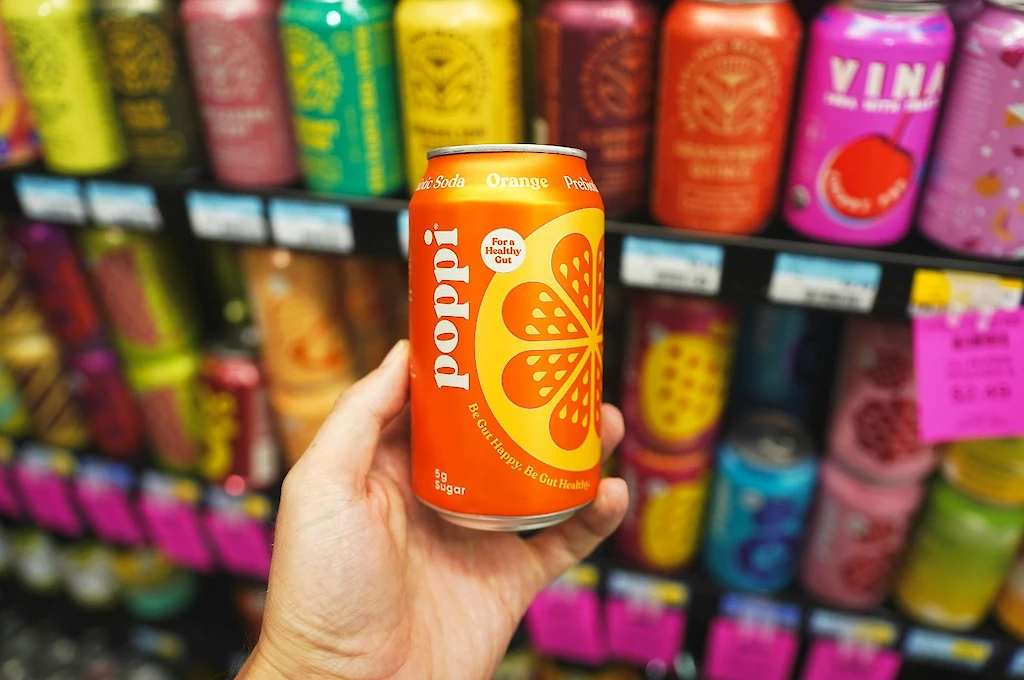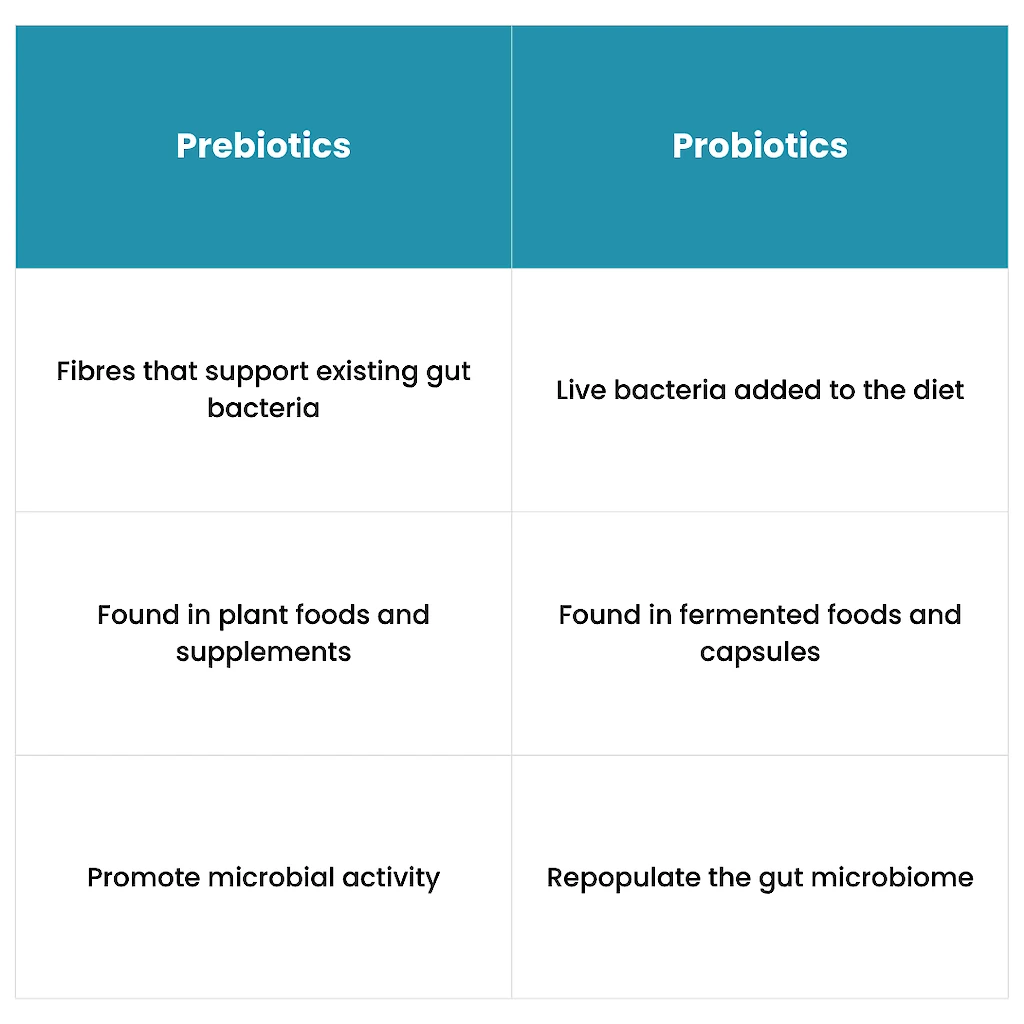Why Prebiotic Fibre Is the Ingredient to Watch

Recent Posts
Categories
What Are Prebiotic Ingredients?
Prebiotic ingredients are fibres that feed beneficial gut bacteria. Found in foods like garlic, onions and bananas, they encourage the growth of microbes such as Bifidobacteria and Lactobacillus, which support digestion and immune function.
Unlike other fibres, prebiotics pass through the upper digestive system undigested. In the colon, they’re fermented by gut microbes, producing short-chain fatty acids which support the gut lining, improve mineral uptake, and can reduce inflammation.
Common Prebiotic Ingredients
- Inulin, found in chicory root and Jerusalem artichokes, is one of the most widely used prebiotics in food production thanks to its mild flavour and texture benefits.
- Fructooligosaccharides (FOS) occur naturally in onions and garlic, and are commonly added to boost fibre content and encourage microbial growth.
- Galactooligosaccharides (GOS), typically derived from milk sugars, are used in functional dairy and infant formulas.
- Resistant starch, found in unripe bananas and legumes, helps stimulate SCFA production and support microbial balance.
Other prebiotics include beta-glucan, pectin, and psyllium, each with different fermentation rates and benefits for microbial diversity.

How They Work
Dietary prebiotics reach the colon intact and are fermented by beneficial microbes. This process produces compounds that nourish colon cells, strengthen the intestinal barrier, and regulate inflammation.
Prebiotic fibres like inulin, GOS, and resistant starch help beneficial bacteria do their job. Whether in whole foods or supplements, they improve digestion by feeding the right gut microbiota and stimulating the production of gut-supporting fatty acids.

How Prebiotic Ingredients Support Gut Health
Prebiotics play a central role in gut function by shaping the microbiome. When they’re fermented in the colon, they produce short-chain fatty acids (SCFAs) like butyrate, acetate and propionate, which help maintain gut barrier integrity and support immune system function.
They also create a more hospitable environment for beneficial microbes, so it's easier for good bacteria to multiply while limiting the growth of harmful species. This microbial balance has knock-on effects: it can reduce bloating, improve nutrient absorption, and even influence mental health and inflammation levels.
Unlike probiotics, which introduce new microbes to the gut, prebiotics enhance what’s already there. They work best when consumed consistently, in a varied diet that includes naturally prebiotic foods like garlic, leeks, and oats, or foods formulated with inulin, resistant starch or other prebiotic fibres.
Food Industry Applications of Prebiotic Ingredients
Prebiotic fibres are now being used in everything from snack bars to dairy alternatives. In baked goods, they can help retain moisture and improve shelf life. In dairy-free yoghurts and drinks, they’re often added to enhance creaminess and stability without artificial thickeners.
They also support common front-of-pack claims. Many food brands now include inulin or FOS to back up high-fibre, gut health or digestive wellness positioning. These ingredients dissolve easily, have a neutral flavour, and blend well into both wet and dry formats, making them especially useful in bars, cereals, smoothies and soups.
Beyond structure and taste, prebiotic fibres can also help reduce sugar in certain products. Their natural sweetness allows them to replace some of the bulk and flavour typically provided by sugar, especially in formulations targeting lower glycaemic index scores.
Market Growth and Industry Trends
The global prebiotic ingredient market is expanding rapidly, valued at USD 8.97 billion in 2024 and expected to reach USD 10.08 billion in 2025, with a robust compound annual growth rate (CAGR) of 12.3% from 2024 to 2034.
With rising consumer interest in gut health and immunity, prebiotics are now featured in more mainstream products than ever. Sales are being driven by shoppers looking for fibre-rich foods that support digestion, metabolism and overall wellbeing. Product developers are responding by exploring new sources of prebiotic fibre, including sustainable and plant-based alternatives like acacia gum and resistant starch from legumes.
At the same time, clean-label demand is pushing manufacturers to choose ingredients that consumers recognise and trust. Inulin, for instance, is not just functional, it’s also familiar, which gives it strong appeal in product development.
Personalised nutrition is another driver. Consumers are becoming more aware of the role their microbiome plays in health. That’s opened the door to products that highlight specific gut benefits, supported by prebiotics, and tailored to different age groups, health goals, or dietary preferences.

Conclusion
Whether you’re developing high-fibre snacks, plant-based dairy, or gut-friendly meals, prebiotic fibres like inulin, GOS and resistant starch can help your products deliver more.
If you’re looking to formulate with prebiotic ingredients, Uren’s development team can help. We work with manufacturers to build gut health benefits into products consumers actually want to eat.










